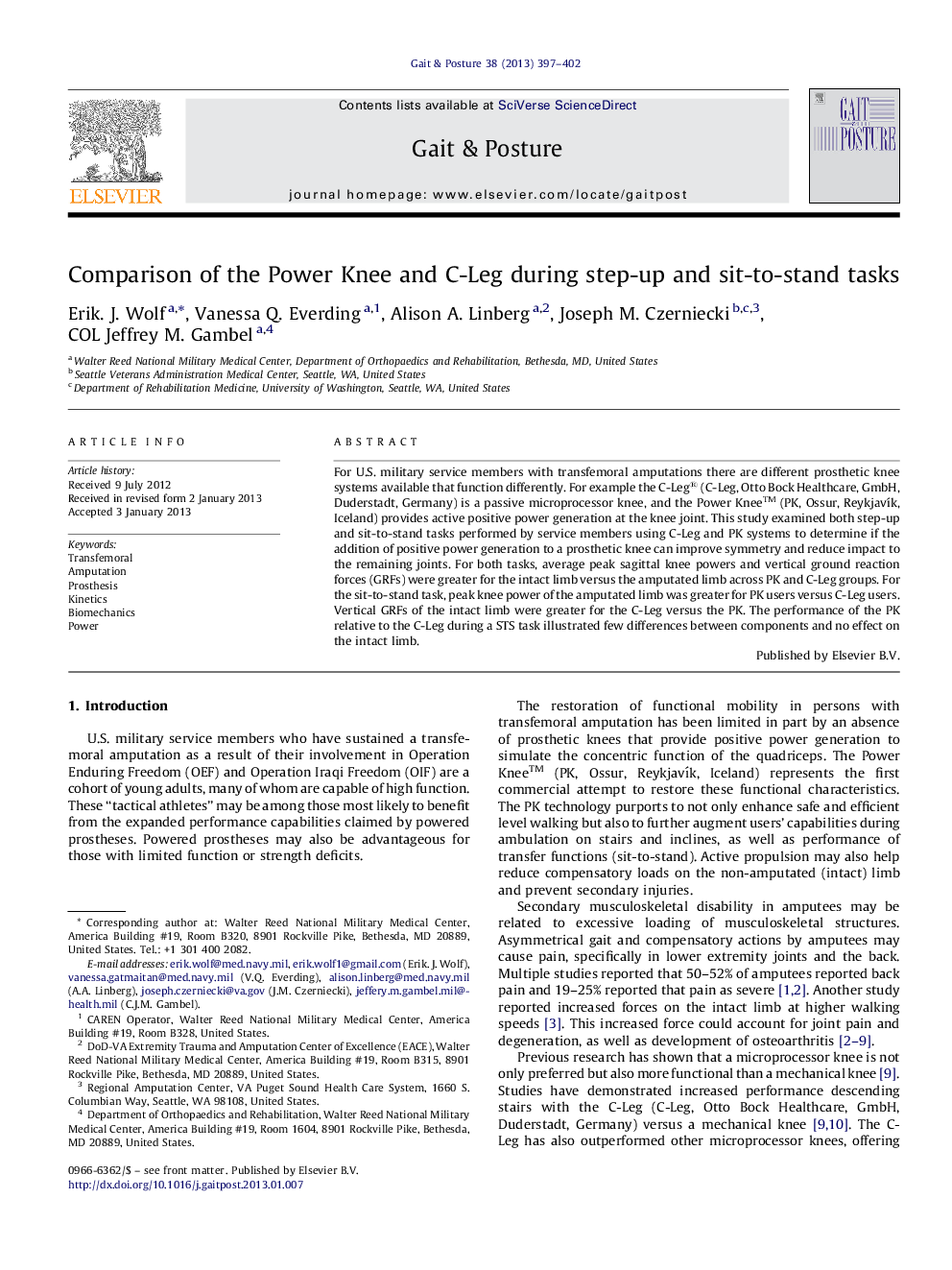| کد مقاله | کد نشریه | سال انتشار | مقاله انگلیسی | نسخه تمام متن |
|---|---|---|---|---|
| 6206605 | 1265650 | 2013 | 6 صفحه PDF | دانلود رایگان |

For U.S. military service members with transfemoral amputations there are different prosthetic knee systems available that function differently. For example the C-Leg® (C-Leg, Otto Bock Healthcare, GmbH, Duderstadt, Germany) is a passive microprocessor knee, and the Power Knee⢠(PK, Ossur, ReykjavÃk, Iceland) provides active positive power generation at the knee joint. This study examined both step-up and sit-to-stand tasks performed by service members using C-Leg and PK systems to determine if the addition of positive power generation to a prosthetic knee can improve symmetry and reduce impact to the remaining joints. For both tasks, average peak sagittal knee powers and vertical ground reaction forces (GRFs) were greater for the intact limb versus the amputated limb across PK and C-Leg groups. For the sit-to-stand task, peak knee power of the amputated limb was greater for PK users versus C-Leg users. Vertical GRFs of the intact limb were greater for the C-Leg versus the PK. The performance of the PK relative to the C-Leg during a STS task illustrated few differences between components and no effect on the intact limb.
⺠Only peak knee power was different for PK versus C-Leg during sit to stand. ⺠No differences in the impact on the intact limb for sit to stand or step up. ⺠Subjects leaned significantly towards their intact limb compared to controls.
Journal: Gait & Posture - Volume 38, Issue 3, July 2013, Pages 397-402